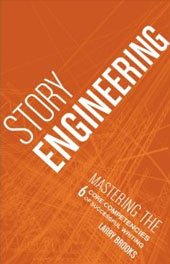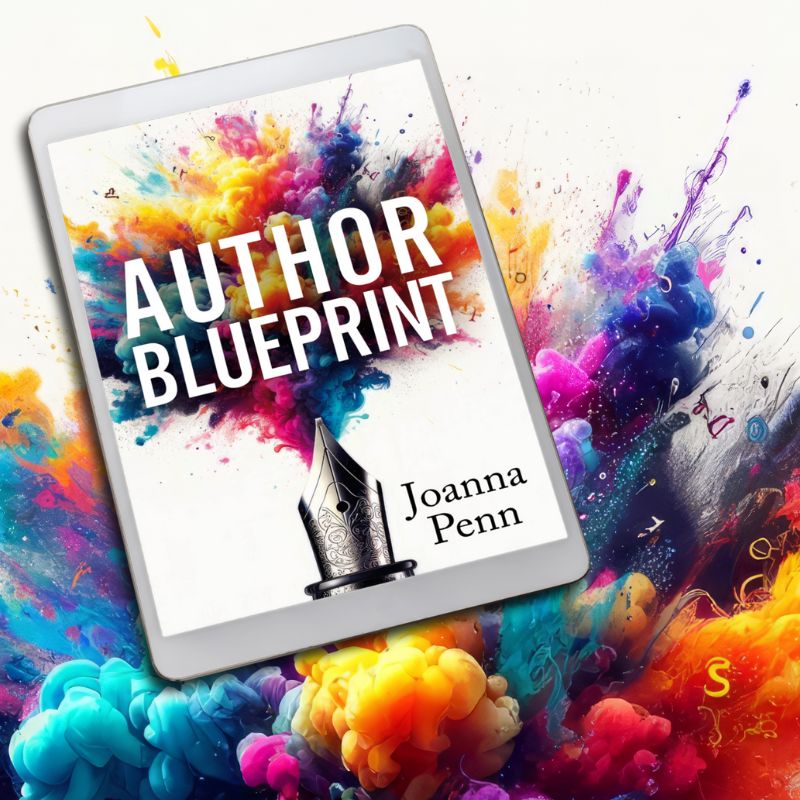OLD POST ALERT! This is an older post and although you might find some useful tips, any technical or publishing information is likely to be out of date. Please click on Start Here on the menu bar above to find links to my most useful articles, videos and podcast. Thanks and happy writing! – Joanna Penn
Larry Brooks is a wealth of information about writing and his blog Storyfix.com was voted the #1 top blog for writers in 2010. In this fantastic interview, Larry shares how you can use the principles of his new book Story Engineering to effectively structure your novel. (Text and audio below the video)
If you prefer to listen to the interview, you can download the audio => StoryEngineering.mp3
In the video, we discuss:
- How Larry got started by teaching writing. He studied screenwriting and brought those principles to novel writing. In 2000, his first novel was published and 4 have been published since. Storyfix was started to help writers and Larry has built that into a very successful blog.
- “When it comes to storytelling, pain is optional.” Quote from Story Engineering. Larry explains the myth of the tortured artist. It's hard work if you don't know how to do something. For example, you really want to fly an aeroplane but you don't know how to fly it unless you learn. If you sit down to write and only use your experience as a reader, you will struggle hence the torture. That pain is optional because there is a set of physics that can help you write your book. It's highly flexible but once you learn these principles, you can apply them anywhere and every successful story contains them. You don't need some mystical ability to write a novel.
- The 6 core competencies you need to write your story. There are an infinite number of things to know but they can be broken down into six major buckets of skill sets that group together naturally. Four are elements you need to bring to a story: Concept, Character, Theme, Story Structure (or story architecture or plot). Then you have Scene Execution and then Writing Voice. In the book Story Engineering, Larry goes into a lot of detail for each of these competencies so you can understand how they are all used.
- On writing scenes. Larry advocates story planning and discusses that even discovery writers/'pantsers' do plan as they write – or they have to go back and rewrite. People often ask “what's the best writing tip” and it has to do with scene writing. Every scene should be mission driven. It has to achieve something specific. It's not “to show my character's sensitivity” but that's not enough. The scene needs to add something to the progression of the story. Once the aspects are in place, you can optimize the scene but you need to know the mission of the scene so you can write to that. If you read and watch movies, you can find the mission of the scene in the best of them. Don't let the scene drag on and on with no mission.
- Scenes in chapters and points of view. A scene doesn't have to be in one chapter, that's up to the writers. But every time you change time, place or point-of-view you change scenes. You can separate them within a chapter by using white space. Many short chapters is kind of a new expectation in today's commercial fiction. James Patterson writes a lot of short scenes.
- You don't have to restart your whole book if you haven't written this way but it's a very effective method for writing. It definitely benefits you by sticking to these principles if you want to write commercial fiction. You have to know the game like a pro athlete as well as being fit, strong and fast. We are creative athletes and we're playing a game. You have to know the rules.
- On the criticism that rules stop creativity. Great quote from TS Eliot
“When forced to work within a strict framework, the imagination is taxed to its utmost… and will produce its richest ideas. Given total freedom, the work is likely to sprawl.”Do you want to be a professional writer whose work sells? You can write anything you like but if you want to be a pro, you need to play the game. The marketplace dictates principles and you have to accept them if you want to succeed. We can be infinitely creative within these boundaries.

Larry's popular blog for writers is Storyfix.com – a definite must-subscribe for fiction writers.


Wow – what a scoop! Loving this whole story engineer thing. I am a person who needs to be confined to a set of rules, otherwise I run wild. That is true of life and of my writing. I’m subscribing to his blog and buying that book – pronto! Thanks for sharing this with me – could be the difference between publication and success and that bin for my manuscript. ;D Shah. X
Thanks Shah – I know you’ll find it useful. Larry has a lot of great analogies too that make it a good read and not just dry material. I also like rules and boundaries 🙂
Interesting and revealing interview. Well done for posting it. I totally agree with two of the main ideas that came out.
The idea of creativity within structure is something I have always believed in. Personally I am into mind maps in a big way and use them for my creativity when fleshing out characters and plots etc. But I use them within the boundaries of a structure and they work very well for me that way.
Also I use scenes and I agree they are the key to writing novels successfully. Interesting that Larry referenced films because one of the best books I have read on scene structure is the famous, ‘Story’ by Robert McKee. There’s a lot in the book but it can be read in bits and dipped into as a reference. It really helps one understand the dynamics of a scene; I’d recommend it. As I will recommend your post. Thanks.
Thanks Christopher – yes, I love Story as well – it’s a very dense read and very focused on movies. Understanding scenes totally changed my perspective on writing. Now it can be broken down into manageable chunks so it’s easier to write. I’m currently outlining the scenes for my next novel, Prophecy – each has the main POV and how the scene unfolds, then I’ll fill in the text and “discovery” write as I go but within the boundaries. I’m also a chronic mind-mapper!
Great interview. He is even more persuasive in person than on his blog! The book is now on my Kindle.
I’ve also heard Story by Robert McKee recommended a lot, so may look at this too.
Larry is definitely eloquent on his topic! Full of great analogies. I love the one about the human faces – there are only a few constants but a lot of creativity to make unique humans!
I love Larry! When I discovered his website a few months back, it literally opened my eyes on how to “build” a story. I’m so glad you got to interview him, Joanna.
It was certainly a pleasure Andrea!
4JAiBc ovsuiedjxtek
Hi Joanna!
Thanks so much for yet another stellar edition to your vlogcast. I have ordered Larry’s book. After watching this vid I’m sure now the buzzz on him and the book “Story Engineering” is ALL true! See you on Twitter!
You’ll definitely enjoy the book Daniel – it’s packed full of useful information for writers.
Great video! I’ve never found storytelling painful, though editing is sometimes tedious. 🙂
Hey Joanna,
Thank you sincerely for this interview. So insightful. I’m reading ‘Story’ by Robert McKee at present and this really aligns with his wisdom.
T.S. Eliot’s quote, which is in McKee’s book, is:
“When forced to work within a strict framework the imagination is taxed to its utmost – and will produce its richest ideas. Given total freedom the work is likely to sprawl.”
I have to agree with this principle. Give me a rhyming scheme any day rather than tell me to write free verse. 🙂
Conor
Yes, I find structuring the story helps immeasurably – and perhaps the “rules” of genre help as well.
Ah, wow! I’ve always wanted to know what Larry looks and sounds like. Very cool… And, I love what he says about every scene needs a mission. I’m definitely going to remember that.
It is great to be able to connect “in person” like this through videos and skype. The world is a lot smaller these days!
Interesting show Joanna. I like Larry’s theory about story writing being based on a set of physics.
I completely agree when he says a scene shouldn’t be there if it is not progressing the story. Many books I have read include filler scenes that are just there to show off the character, but not to continue the plot.
Character development is a big part of telling a story of course, but the trick is making it tie in with the plot. A scene definitely does need a mission.
Thanks Gary – writing by scenes really did change my fiction writing life!
Thanks for this and all the info and inspiration I have garnered at my favourite little corner of the writer’s world.
The screenplay attitude towards story construction is helpful as I am exploring this currently, though can’t help resisting structure and “guidelines” even when purported to help. I can’t help feeling that inspiration comes from a place outside the box and that the story finds it’s own ground and integrity through rigorous editing (at least for me). But what do I know – I’m no TS Eliot, so I take note, even though what works for Eliot and other story engineers, may not work in my water world – seeking the path of least resistance to unfathomed depths? Hopefully!
Hi Nik, I think the inspiration thing is separate – I get ideas from a lot of places and the composting of those together is one part of the process. Then taking those ideas and using the structural approach to put a story together is the next step. So there’s definitely still room for your creativity!
I loved Larry’s book. Thanks for doing this Joanna! It was such a different experience watching you guys talk about the competencies, instead of just reading it. Makes me realize how much is lost without our tone of voice and our facial expressions.
7a7pc9 icnzwtwckpya
I have a bookshelf buckling under the weight of How To’s, but felt Larry’s book was worth a shot.
Does it live up to expectations – Yes to a point.
I was left with the impression it is a 100 page gem but packaged with 140 pages of fluff. Larry is obviously passionate about his subject but I got a tad fed up with the constant analogies and other ramblings before being allowed to read the stuff i did want to know. I have bought the book, there’s no reason to keep trying to sell me the idea every other page.
Having said that, is it worth the money – YES: Does it add skills to the writers back pocket – YES: Would I recommend it – ABSOLUTELY.